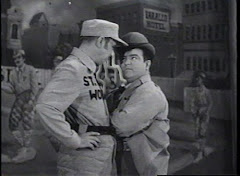In parts one and two we touched on the basic building blocks of the CNS and a couple of the mechanisms that allow our biological neural networks to develop with experience. This part is mercifully short but important (should have doe this one before plasticity). Before starting into the higher levels of organization within the CNS it's good to really nail down the level of complexity that exists at the most basic level. One of the hang ups people have about a biological explanation for thought is an under appreciation for just how extensive our neural networks really are.
Part one covered very basic structures of the neuron with the picture below.

We covered the fact that the level of connectivity of a real neuron was considerably higher, but how high is it really? The image below is closer to reality. This image looks much more complex than the simplified one above. Surely, it's an accurate illustration of a real neuron.

No, not really. This illustration shows 800 dendrites. Eight hundred individual connections with other neurons to a single neuron. And it's still just a simplification. The average neuron in the average adult human brain has 7000+ connections. So this complex looking picture is 8-10x too simple to represent the average human neuron.
Now imagine the connections to this one neuron.

In this image stimulating neurons are ones with purple dendrites and regulating ones are in green. Some neurons are tasked with suppressing the firing of a neuron and others with stimulating it to pass its signal to those up its chain. This is just the connectivity of one amongst 10- 11 billion others. Each of which is connected to a similar number of others.
 Looks very complex doesn't it. The only problem is that these last two pictures would have to include 260x more connections to be an accurate picture of an average neuron. Do the math. Is it really that hard to imagine that some extraordinary processes that at times look magical can be accomplished with the numbers of combinations or permutations that actually exist in our brains?
Looks very complex doesn't it. The only problem is that these last two pictures would have to include 260x more connections to be an accurate picture of an average neuron. Do the math. Is it really that hard to imagine that some extraordinary processes that at times look magical can be accomplished with the numbers of combinations or permutations that actually exist in our brains?






















7 comments:
It's hard to imagine.
Is it really that hard to imagine that some extraordinary processes that at times look magical can be accomplished with the numbers of combinations or permutations that actually exist in our brains?
Short answer?
Hell, no!
Looks like magic to me.
Mike, any sufficiently complex system can appear magical until you understand sufficiently how it works.
People at work often ask how I make changes on their computers (installing software, deleting files, etc.) while they are working on their computer while they are on it. I generally reply "magic" because they really don't want to know. It isn't, of course, but if I say "I have a program that opens an SSH tunnel into your computer and allows me to open a command prompt remotely without you being able to see it, from which I can make any changes to your system after acquiring admin-level user rights" (which I have said on a few occasions) they look like a deer in the headlights.
There was an author on the Colbert Repor' who claimed that a cubic millimeter of brain matter had more connections than the number of stars in the Universe.
That pretty hard to imagine.
There was an author on the Colbert Repor' who claimed that a cubic millimeter of brain matter had more connections than the number of stars in the Universe.
That sounds a tad hyperbolic.
"The observable universe contains about 3 to 100 × 10^22 (30 sextillion to a septillion stars)..." Observable Universe - Matter Content
There's "30 sextillion to a septillion" connections in one cubic millimeter of brain tissue? There's probably not that many atoms in that much volume...
No, the author did not say "the universe," he said "The brain is the most complicated thing we've ever found in the universe, and it consists of hundreds of millions of neurons that are connected in such complexity that a cubic millimeter of brain tissue has as many connections as there are stars in the Milky Way Galaxy." If you don't believe me (and I encourage you not to) you can find the interview here:
http://www.colbertnation.com/full-episodes/thu-july-21-2011-david-eagleman
The quote is between the 16 and 17 minute marks.
He is a bit off by a couple orders of magnitude and it does seem to be a bit hyperbolic since most people don't know the number of stars in the galaxy (had he added the caveat of all stars in the galaxy that would be visible to the naked eye on a clear night, he would be pretty spot on). There are 200-400 billion stars in the galaxy and the human brain has .6-1.4 billion synapses per cubic millimeter depending upon the region and individual you excise your little sample from.
Post a Comment